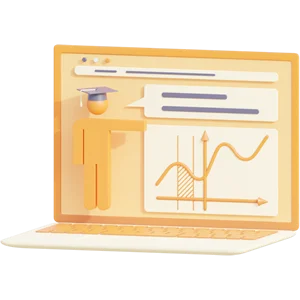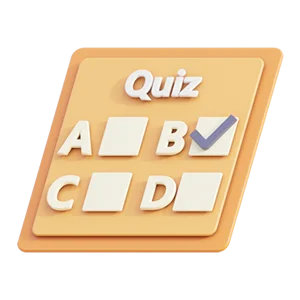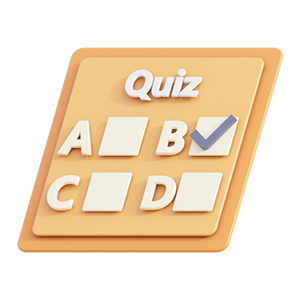APEA 3P EXAM PREP6 –GL WITH VERIFIED QUESTIONS AND ANSWERS WTH RATIONALE
APEA 3P EXAM PREP6 –GL WITH VERIFIED QUESTIONS AND ANSWERS WTH RATIONALE
Mrs. Lovely, an 84-year-old, complains of fecal incontinence. A likely cause is: inactivity.
constipation.
poor fluid consumption. medication-related.
B.
Underlying constipation is a common cause of fecal incontinence in older adults. However, typically it is multifactorial. Risk factors include: age > 80 years, impaired mobility, and neurologic disorders including dementia. Inactivity and poor fluid consumption may contribute to constipation but are not causes of fecal incontinence.
A 79-year-old with appendicitis is unlikely to exhibit:
generalized abdominal pain. initial WBC elevation.
UTI symptoms. low-grade fever. B.
Very young children and elderly adults are not likely to have initial WBC elevations. Consequently, appendicitis can be easily missed in these populations. Generalized abdominal pain is typical initially. UTI symptoms in older adults can manifest as lower abdominal pain and are a common presentation in this age group. Low-grade fever is common too.
The relationship between colon polyps and colon cancer is those polyps: eventually, all become malignant.
have a slow progression to colon cancer. have a rapid progression to colon cancer. have no relationship to colon cancer.
B.
Colon polyps are usually slow-growing and take a long time to progress to cancer. This is the reason that a colonoscopy does not need to be repeated annually. While not all polyps grow slowly, this is the usual progression.
A 5-year-old has been diagnosed with pinworms. He lives with his mother. There are no other members of the household. How should his mother be managed?
Reassure the mother that if she develops symptoms, she will need to be treated. Visually assess the mother’s rectum for redness or presence of worms.
Have the mother collect a stool specimen and send it to the laboratory. Perform the “scotch tape” test and look at the collection under the microscope. D.
The diagnosis of pinworms (Enterobiasis) is made by using a piece of scotch tape on a tongue depressor. It is touched against the patient’s rectum. The greatest yield of eggs will occur during the nighttime or early AM. Eggs will be found here if they are present. Worms and eggs are rarely found in stool specimens, so this is not a good plan. When the scotch tape is examined under a low power microscope, the eggs will be easily visualized since they are large and bean shaped. The finding of an adult worm would confirm the diagnosis. These are large enough to be seen with the naked eye. If the mother is symptomatic, she should be treated with or without a rectal exam. It is very likely she is infected.
A patient has been diagnosed with hepatitis B. The most commonly reported risk factor is:
drinking contaminated water. eating contaminated food. exposure to blood.
sexual exposure. D.
Hepatitis B is transmitted by blood and body fluids. While exposure to infected blood or blood products would significantly increase the risk of infection in unvaccinated people, this is much less likely than becoming infected via sexual exposure or IV drug use. Hepatitis A is transmitted via fecal-oral routes. Drinking contaminated water and eating contaminated food implicate hepatitis A as the etiologic agent.
The three most common causes of bacterial diarrhea in the US are Salmonella, Campylobacter, and:
E. coli.
Enterovirus. Yersinia.
Shigella. D.
Shigella will be shed continuously in the stool and should be easily identified on stool culture. When bacterial gastroenteritis is suspected, a stool specimen could be ordered for confirmation. Generally, these three pathogens are easily identified if they are present. Enterovirus produces a viral form of diarrhea. Yersinia produces the deadly disease called bubonic plague. E. coli is a typical colonic pathogen.
An 83-year-old patient is diagnosed with diverticulitis. The most common complaint is:
rectal bleeding. bloating and cramping.
left lower quadrant pain. frequent belching and flatulence.
C.
Diverticular disease is more common in older adults. About 70% of patients diagnosed with diverticulitis have left lower quadrant pain. Rectal bleeding may have varied etiologies, such as rectal carcinoma or hemorrhoids. Bloating and cramping are often found in patients with diverticular disease (diverticulosis) but not specifically diverticulitis. Belching and flatulence are not specifically associated with diverticulosis.
What is true regarding older adults who are overweight?
This is clearly associated with increased mortality in older adults. Mortality in older adults related to overweight states declines over time. BMI is a good way to assess nutritional status in older adults.
There are no potential metabolic or functional benefits to weight loss in older adults. B.
Overweight and obese states are not as important in predicting mortality in older adults as they are in their younger counterparts. After age 65 years (some studies demonstrate after age 70), weight is less significant in decreasing risk for mortality than in younger adults. There are some benefits to weight loss in the obese older adults. One of them is better balance and decreased risk for falls. Others include less sleep apnea, decreased risk of diabetes, and decreased rates of shortness of breath with respiratory and cardiac diseases.
What medication used to treat patients who have GERD provides the fastest relief of heartburn symptoms?
Calcium carbonate Ranitidine Amantadine Pantoprazole
A.
Calcium carbonate is an antacid. It provides rapid changes in gastric pH. This provides relief that can be noticed immediately. The increase in pH lasts for about 30 minutes and corresponds with resolution of symptoms. However, as pH decreases within 30 minutes, symptoms may return. Ranitidine is an H2 blocker. It provides relief in 1-2 hours. This usually lasts for about 6-12 hours. Amantadine is an antiviral not used to treat GERD. Pantoprazole is a proton pump inhibitor. This provides relief after several hours or days of daily consumption.
An 84-year-old presents with a stated involuntary weight loss. He states that he’s lost about 6 pounds in the last 6 or 8 weeks. What statement below is NOT part of the assessment?
The weight loss should be measured today and again in the next few weeks. A laboratory evaluation should be performed.
Evaluate his dietary intake.
Evaluate his upper and lower extremity muscle mass. D.
Involuntary weight loss in older adults is often due to malignancy or disease. The initial assessment of an older adult who reports involuntary weight loss is to document the weight loss. If prior measurements are part of the patient’s chart, this would be helpful. Laboratory assessment should also be performed. Consideration should be given to performing a CBC, TSH, and metabolic panel. Also consider chest and abdominal X-rays. If all are normal, he should be monitored and reweighed on the same scale for comparison. A dietary consult should be ordered. However, even with negative initial findings, a significant number of patients are later found to have disease or malignancy
A patient has a positive hepatitis B surface antibody. This means he: has acute hepatitis B.
has chronic hepatitis B. is immune to hepatitis B.
needs immunization to hepatitis B. C.
The hepatitis B surface antibody indicates immunity to hepatitis B virus. Specifically, if this patient comes in contact with hepatitis B virus, he will not become infected with hepatitis B. The presence of hepatitis B surface antibody indicates immunity from immunization or actual infection. It also indicates recovery if the patient was infected.
A patient with a suspected inguinal hernia should be examined: in the prone position.
standing. side-lying.
with patient squatting. B.
The patient should be examined while he is standing. He should be asked to bear down, cough, or strain during the exam. Though hernias are far more common in males, they can be found in females too. In males, the patient should be asked to stand. The examiner should put his 2nd or 3rd finger through the scrotum and into the external ring. When the patient is asked to cough, a “silky” feel will butt up against the examiner’s finger, and the hernia can be easily felt.
Preview document (3 van de 55 pagina's)
Voordelen van Knoowy
€ 44,20
 Niet tevreden? Geld terug
Niet tevreden? Geld terug
 Document direct te downloaden
Document direct te downloaden
 € 0,50 korting bij betalen met saldo
€ 0,50 korting bij betalen met saldo
-
 Ontvang gratis oefenvragen bij document
Ontvang gratis oefenvragen bij document

Specificaties
- School: Chamberlain College Of Nursing
- Opleiding: NURSING
Document
- Rubriek: Tentamens
- Gemaakt op: 18-01-2024
- Type: .pdf
- Pagina's: 55
- Taal: English
Tags
Verkoper
Helps students with ALL BEST Revision; Guides,Exams,Summaries,Test Banks ...etc.WISHING YOU SUCCESS
Verdienen aan je samenvattingen?
Vakken van NURSING - Chamberlain College Of Nursing
Meer NURSING ›ati ati comprehensive predictor ati fundamentals proctored ati rn comprehensive predictor comprehensive comprehensive predictor fundamentals health care health care / nursing health care/ nursing healthcare hesi hesi rn exit maternal newborn med surg medical nursing medical surgical mental health nurs nursing nursing & health pediatrics pharmacology test bank tncc
Al meer dan 146.000 tevreden studenten
-
WilmaSchaapman
Gebruik het! Knoowy heeft een uitgebreid en divers aanbod en het scheelt je veel tijd met leren.
-
Simone Dijkstra
Juiste plek voor een goeie voorbereiding op je komende toets.
-
StudentsOnly
Knoowy is voor ons een extra verkoopkanaal en biedt de mogelijkheid samenvattingen online te verkopen.
-
FabriceVer
Je spaart enorm veel tijd uit door gebruik te maken van deze samenvattingen!
-
Nadia Kasmi
Altijd tevreden over Knoowy! Reeds vele samenvattingen gedownload maar ook geüpload.
-
Bianca
Ik vind Knoowy de max! Door de hulp van andere studenten kan ik mijn examens makkelijker halen.
-
martinraasveld3105
Prima database om studiemateriaal uit te halen, goed toegankelijk, eenvoudig zoeken.
-
nijhuis
Bij Knoowy vind ik notities van vakken die mij helpen bij het leren.
 Actie: ontvang 10% korting bij aankoop van 3 of meer items!
Actie: ontvang 10% korting bij aankoop van 3 of meer items!
Actie: ontvang 10% korting bij aankoop van 3 of meer items!









